Peter says:
“Spring roll… An Asian-American appetizer made of crispdough wrapped around a filling of various ingredients such as vegetables, meat, shrimp, and seasonings. Sometimes synonymous with “egg roll,” it is considered somewhat more “authentic” and delicious than the latter. The name, which dates in English print to 1943, comes from the Chinese tradition of serving them on the first day of the Chinese New Year, which is also the first day of the lunar year’s spring.” -Encyclopedia of American Food and Drink
When asians get tired of accumulating copious amounts of vitamin B from rice and fish sauce, they turn to a very delectable treat that can only be described as, “the best invention since the chopstick.” Originally an invention of the Chinese, the Spring Roll, nowadays synonymous with the Egg Roll, is quite different from its distant cousin. Spring rolls are served fresh with thinner rice paper, while Egg Rolls are made with, you guessed it, egg-glazed rice paper. Since 1985, when America popularized it, this treat has gained so much precedence that I will, from this moment on, refer to is as “her Springness.”


Egg Roll (top) and Spring Roll (bottom)
Asians love this voluptuous woman for the following reasons:
Delectability: Her Springness is a mixture of the best boiled shrimp, steamed pork, vermicelli noodles, lettuce, and herbs wrapped by a soft or crunchy rice-paper shell (depending on preference). She is usually served as in hors d’oeuvres, along with chow mein and the infamous “flied lice.” No asian can resist her mixture of meat and herbs, as she has become paraded around during asian festivities more times than the Pope has walked the Vatican.
festivities more times than the Pope has walked the Vatican.
Portability: Her Springness may be larger than an oreo or fig bar, but she quite dynamic. Asians kidnap her from dinner parties, birthdays, graduations, even funerals. Much like her loyal servants, she is forced into suspended animation in the refrigerator until her new masters are hungry. When this occurs, she can either be thawed or re-fried, once again bringing her back to power over asian taste buds.
Versatility: Her filling can be meat or vegetarian, economical or rich. If she is Fujianese, she will have very exotic fillings such as carrots, shredded cabbage, or leeks. Her Shanghai-ese counterpart will have a diversity of fillings including bamboo shoots. Her Cantonese cousin, however, has traveled overseas and is now known in the West as “Egg Roll.” Some asians think of her as “the best of Spring Rolls” for her widespread popularity and deliciousness.
“Her Springness” has a vast amount of family around the world, each incorporating a bit of its country into its ingredients. The Chinese believe in the merit and charm of eating her “undressed.” The Vietnamese, on the other hand, love to wrap her with soft lettuce, basil and mint. They will also drench her in glorious fish sauce to enhance her appearance and taste.
“Like many Vietnamese dishes, eating it this way resonates with layers of flavors and textures - the crispy vegetables and fish sauce with the crunchy spring roll…”
 Let’s get back to reality. Asians everywhere love the Spring Roll and Egg Roll for their delectability, portability, and versatility. They have become a staple commodity at all asian fast food stores and even some higher class restaurants. So much so, that Wolfgang Puck has incorporated and mutilated them in one of his “Asian Fusion” recipes. They are also portable, as asians everywhere bring them home to their friends and families. Lastly, they are quite versatile. Everywhere they go, Spring/Egg Rolls gain new and better qualities. Asians know that there is nothing better than rice, but the Spring/Egg Roll comes in at a close second.
Let’s get back to reality. Asians everywhere love the Spring Roll and Egg Roll for their delectability, portability, and versatility. They have become a staple commodity at all asian fast food stores and even some higher class restaurants. So much so, that Wolfgang Puck has incorporated and mutilated them in one of his “Asian Fusion” recipes. They are also portable, as asians everywhere bring them home to their friends and families. Lastly, they are quite versatile. Everywhere they go, Spring/Egg Rolls gain new and better qualities. Asians know that there is nothing better than rice, but the Spring/Egg Roll comes in at a close second.
Here’s a video tutorial on How to Make Spring Rolls:


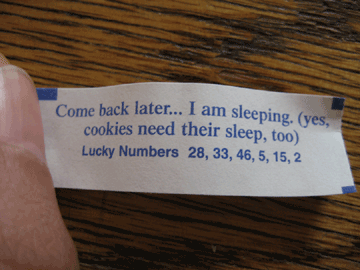






 The most common things Asian women change are their “lids.” Asian eyelids usually have a single fold (otherwise known as a monolid), whereas Caucasian eyelids have “double folds.” It is this “double fold” that Asian women spend most their lives coveting.
The most common things Asian women change are their “lids.” Asian eyelids usually have a single fold (otherwise known as a monolid), whereas Caucasian eyelids have “double folds.” It is this “double fold” that Asian women spend most their lives coveting.
 Does eye enlargement sound ridiculously strange to you, or are you a woman who finds this so appealing that you have to try it right now?
Does eye enlargement sound ridiculously strange to you, or are you a woman who finds this so appealing that you have to try it right now?  White beauty standards put pressure on Asian women even when they’re in their home countries (which is sad and doesn’t make much sense). For you Asian-American women who read beauty mags and never understand the part where they say “apply eyeshadow to the crease” - I suggest you check out the book
White beauty standards put pressure on Asian women even when they’re in their home countries (which is sad and doesn’t make much sense). For you Asian-American women who read beauty mags and never understand the part where they say “apply eyeshadow to the crease” - I suggest you check out the book  Have you ever wondered why asian girls can date white guys, but it’s rare to see an asian guy with a white girl?
Have you ever wondered why asian girls can date white guys, but it’s rare to see an asian guy with a white girl? like what other puppies like, including the female dogs.
like what other puppies like, including the female dogs.
 Asian guys would also love to date a white girl, but can’t. White guys, on the other hand, love to date asian women and can. There are immense differences in preferences and motivation among these genders. When asian guys talk about “Bleach” to white girls, they immediately think “hair product,” before they realize the guy is talking about that book he is reading from right to left (manga).
Asian guys would also love to date a white girl, but can’t. White guys, on the other hand, love to date asian women and can. There are immense differences in preferences and motivation among these genders. When asian guys talk about “Bleach” to white girls, they immediately think “hair product,” before they realize the guy is talking about that book he is reading from right to left (manga).
 allow Asians to pursue their love of #3 – academia more successfully, but that darn accessory immediately decreases an Asian male’s attractiveness to the other sex. (Yes white women, I’m looking your way). But asian ladies fear not: glasses merely give them that ‘sexy librarian’ look (or at least the Asian equivalent). As the guys on ‘Stuff White People Like’ can attest to (as per #12 on that list), asians will always appear attractive to white guys, so at least they always have that! So in effect, glasses are a hindrance to one Asian gender, but a benefit to the other. (Gender equality, you gotta love it!)
allow Asians to pursue their love of #3 – academia more successfully, but that darn accessory immediately decreases an Asian male’s attractiveness to the other sex. (Yes white women, I’m looking your way). But asian ladies fear not: glasses merely give them that ‘sexy librarian’ look (or at least the Asian equivalent). As the guys on ‘Stuff White People Like’ can attest to (as per #12 on that list), asians will always appear attractive to white guys, so at least they always have that! So in effect, glasses are a hindrance to one Asian gender, but a benefit to the other. (Gender equality, you gotta love it!) What it all boils down to in the end is genetics. Those slanty Asian eyes don’t quite operate as they should. That’s why Asians love anime: Characters usually have mesmerizing, huge, and doughy eyes. It’s an Asian desire to have eyes comparable to their beloved anime characters. As this dream cannot be realized in real life (not even by plastic surgery *michael jackson*), asians have to live with the reality of their eyes. Mother Nature doesn’t, unfortunately, favor asians.
What it all boils down to in the end is genetics. Those slanty Asian eyes don’t quite operate as they should. That’s why Asians love anime: Characters usually have mesmerizing, huge, and doughy eyes. It’s an Asian desire to have eyes comparable to their beloved anime characters. As this dream cannot be realized in real life (not even by plastic surgery *michael jackson*), asians have to live with the reality of their eyes. Mother Nature doesn’t, unfortunately, favor asians.

 Asian chicks dig white guys. Somewhere in the midst of the pseudo-nationalistic indoctrination our well-meaning parents inflict upon us, we ladies stop paying attention and allow tall(er), skinny, white boy engineers to steal our hearts.What’s up with the race treason? One theory: They love us. Asian fetish, yellow fever. Whatever you call it, there’s plenty of literature out there telling white men that we slant-eyed princesses are the exotic, submissive, and hypersexualized women of their dreams.
Asian chicks dig white guys. Somewhere in the midst of the pseudo-nationalistic indoctrination our well-meaning parents inflict upon us, we ladies stop paying attention and allow tall(er), skinny, white boy engineers to steal our hearts.What’s up with the race treason? One theory: They love us. Asian fetish, yellow fever. Whatever you call it, there’s plenty of literature out there telling white men that we slant-eyed princesses are the exotic, submissive, and hypersexualized women of their dreams. This post, however, is not about why white guys live in a delusional fantasy world. It’s a dissertation on why, despite the tawdry roots of our suitors’ affection, we just eat it up. One economist says it’s because Asian women are the
This post, however, is not about why white guys live in a delusional fantasy world. It’s a dissertation on why, despite the tawdry roots of our suitors’ affection, we just eat it up. One economist says it’s because Asian women are the  stuff. Asian boys learned the lesson; girls, not so much.
stuff. Asian boys learned the lesson; girls, not so much. derstand the essentials of music.
derstand the essentials of music. kindergarteners (before they start learning how to use chopsticks, but after they start their introductory calculus lessons), or even while in pre-school (I had my first piano lesson just before my 4th birthday)!
kindergarteners (before they start learning how to use chopsticks, but after they start their introductory calculus lessons), or even while in pre-school (I had my first piano lesson just before my 4th birthday)!


 purchased or received at one point. Like the knives, most of them will remain untouched for years. Because Asians absolutely loathe throwing away useful things (future post), these items will build up over the years. However, certain items will be used meal after meal: a large pot for soup/porridge, a steamer, a rice cooker (of course). But perhaps the crown jewel of the Asian kitchen is the wok. Almost everything in an Asian person’s stomach at one point was conceived in a wok.
purchased or received at one point. Like the knives, most of them will remain untouched for years. Because Asians absolutely loathe throwing away useful things (future post), these items will build up over the years. However, certain items will be used meal after meal: a large pot for soup/porridge, a steamer, a rice cooker (of course). But perhaps the crown jewel of the Asian kitchen is the wok. Almost everything in an Asian person’s stomach at one point was conceived in a wok. You know you’ve seen it, and you know you’ve wondered why asian people use it so often. All asians: Chinese, Japanese, Vietnamese, and (Insert Asian Ethnicity)-ese have utilized this sign in pictures from the time of the 1972 Sapporo Winter Olympics, where an embarrassed Janet Lynn raised it up in victory after falling on her rump. This phenomenon, from that moment, spread faster than a Windows Vista virus because the Japanese Media plastered it on every poster and television advertisement. (Before that, Americans used it to signal “V” -ictory during WWII, but the Japanese seldom used it as a peace sign.)
You know you’ve seen it, and you know you’ve wondered why asian people use it so often. All asians: Chinese, Japanese, Vietnamese, and (Insert Asian Ethnicity)-ese have utilized this sign in pictures from the time of the 1972 Sapporo Winter Olympics, where an embarrassed Janet Lynn raised it up in victory after falling on her rump. This phenomenon, from that moment, spread faster than a Windows Vista virus because the Japanese Media plastered it on every poster and television advertisement. (Before that, Americans used it to signal “V” -ictory during WWII, but the Japanese seldom used it as a peace sign.)
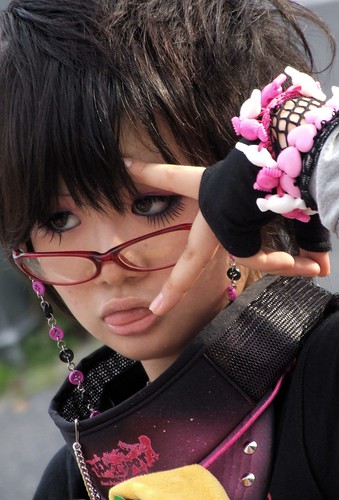 can be mistaken for their chinky eye lining. To show that they are indeed happy, asians outline their grinning chins with a “V” sign to draw attention away from their non-existant eyes. They also wouldn’t ever want to yell something while taking a picture because it would draw more attention to them. However, Asians are always stoked when a photo opp arises. In these situations, asians, instead of using America’s ludicrously awkward phrase, “Cheese,” will use the peace sign to show that they are indeed present in the photograph. By present, I mean enthusiastic and excited about being in someone else’s life story. This is due in part to the Asian love for emotional-understanding and inciting reactions (later post).
can be mistaken for their chinky eye lining. To show that they are indeed happy, asians outline their grinning chins with a “V” sign to draw attention away from their non-existant eyes. They also wouldn’t ever want to yell something while taking a picture because it would draw more attention to them. However, Asians are always stoked when a photo opp arises. In these situations, asians, instead of using America’s ludicrously awkward phrase, “Cheese,” will use the peace sign to show that they are indeed present in the photograph. By present, I mean enthusiastic and excited about being in someone else’s life story. This is due in part to the Asian love for emotional-understanding and inciting reactions (later post).
 peace sign popular among school girls and in some cases, boys. (Batz Maru, Pochocco, and Pekkle are not female characters). Even though the fingers are non-existent in some cases, this pose has caused a revolution in which children think it’s necessary to raise peace signs to look cute and innocent. The sign lives on today as the residual of a more innocent time in which kids didn’t grow up with computers and instead drew pictures of their favorite cartoon characters.
peace sign popular among school girls and in some cases, boys. (Batz Maru, Pochocco, and Pekkle are not female characters). Even though the fingers are non-existent in some cases, this pose has caused a revolution in which children think it’s necessary to raise peace signs to look cute and innocent. The sign lives on today as the residual of a more innocent time in which kids didn’t grow up with computers and instead drew pictures of their favorite cartoon characters.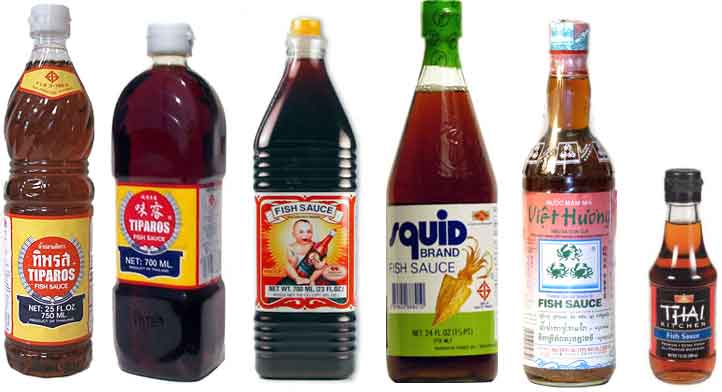
 Like rice, Fish Sauce is a good source of vitamin B and protein. It is ironically made from — surprise, surprise — salted fish! In addition to being a valuable cooking ingredient, fish sauce also doubles as a dipping sauce for everything from vegetables and seafood, to spring rolls and rice cakes. Due to its varying consistency, some asians even call it “fish gravy.” In Vietnam, it is known as “nuoc mam,” and in Thailand, “nam pla.” It also comes in many brands, including squid, fish, and crab. (Contrary to common belief, the popular Squid Brand fish sauce does in fact contain no squid.) The average asian is even able to tell if it’s been used in a dish or not, showing the importance it has to asians around the world. (It is one of the many asian traits that make up for lack of stature.)
Like rice, Fish Sauce is a good source of vitamin B and protein. It is ironically made from — surprise, surprise — salted fish! In addition to being a valuable cooking ingredient, fish sauce also doubles as a dipping sauce for everything from vegetables and seafood, to spring rolls and rice cakes. Due to its varying consistency, some asians even call it “fish gravy.” In Vietnam, it is known as “nuoc mam,” and in Thailand, “nam pla.” It also comes in many brands, including squid, fish, and crab. (Contrary to common belief, the popular Squid Brand fish sauce does in fact contain no squid.) The average asian is even able to tell if it’s been used in a dish or not, showing the importance it has to asians around the world. (It is one of the many asian traits that make up for lack of stature.)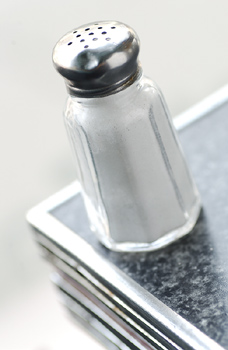 sanitary living conditions. This is the situation in Southern Vietnam during the winter. Asians know what will happen if they purchase salt. They teach it to their children and they teach it to their children. Here’s the correct answer!: It would most definitely spoil, leaving the asians without sodium to fuel their “high-blood pressure” diets. Enter fish sauce, which is instead stored in a bottle with a cap in order to preserve its freshness. It’s an innovation that has allowed asians everywhere to season their food without the hassle of salt. I haven’t even mentioned the number of precious salt morsels lost during the transferral process because asians hate wasting food, down to the very last grain. Why pay for bad salt when an asian only has to endure some reeking aroma. Another important reason for utilizing fish sauce is:
sanitary living conditions. This is the situation in Southern Vietnam during the winter. Asians know what will happen if they purchase salt. They teach it to their children and they teach it to their children. Here’s the correct answer!: It would most definitely spoil, leaving the asians without sodium to fuel their “high-blood pressure” diets. Enter fish sauce, which is instead stored in a bottle with a cap in order to preserve its freshness. It’s an innovation that has allowed asians everywhere to season their food without the hassle of salt. I haven’t even mentioned the number of precious salt morsels lost during the transferral process because asians hate wasting food, down to the very last grain. Why pay for bad salt when an asian only has to endure some reeking aroma. Another important reason for utilizing fish sauce is: This aura spans about a 4 meter radius from its center of tastiness. It is only until the bottle is closed, or the sauce is assimilated that it subsides. Fish sauce not only helps asians enjoy their food, it is a way to keep non-asians from harrassing them about their family recipes. “What’s this made of? It’s fabulous!!” Much like a skunk, fish sauce holds the ability to release an odor in order to protect its asian master’s recipes from being mimicked. When non-asian eat delectable asian dishes, they always ask about the “secret ingredient.” Asians always answer, “Fish sauce,” which more times than none turns the person off faster than a picture of goatse. Asians know that it is they and only they that can withstand the putrid stench. This leaves non-asians at a loss when they are around it. As a result, asians benefit, because the smell allows asians to enjoy their meals without constantly being bothered when they are at restaurants.
This aura spans about a 4 meter radius from its center of tastiness. It is only until the bottle is closed, or the sauce is assimilated that it subsides. Fish sauce not only helps asians enjoy their food, it is a way to keep non-asians from harrassing them about their family recipes. “What’s this made of? It’s fabulous!!” Much like a skunk, fish sauce holds the ability to release an odor in order to protect its asian master’s recipes from being mimicked. When non-asian eat delectable asian dishes, they always ask about the “secret ingredient.” Asians always answer, “Fish sauce,” which more times than none turns the person off faster than a picture of goatse. Asians know that it is they and only they that can withstand the putrid stench. This leaves non-asians at a loss when they are around it. As a result, asians benefit, because the smell allows asians to enjoy their meals without constantly being bothered when they are at restaurants. Without exception, every Asian male under the age of 25 has at one point idolized Jet Li, and if they are old enough (or watch older movies), Bruce Lee. In dojos and college campus martial arts groups across the country, thousands of young Asian men train regularly in order to become the next great martial artist. But aside from being martial arts practitioners, these two actors/martial artists have captured the hearts of Asians everywhere.
Without exception, every Asian male under the age of 25 has at one point idolized Jet Li, and if they are old enough (or watch older movies), Bruce Lee. In dojos and college campus martial arts groups across the country, thousands of young Asian men train regularly in order to become the next great martial artist. But aside from being martial arts practitioners, these two actors/martial artists have captured the hearts of Asians everywhere.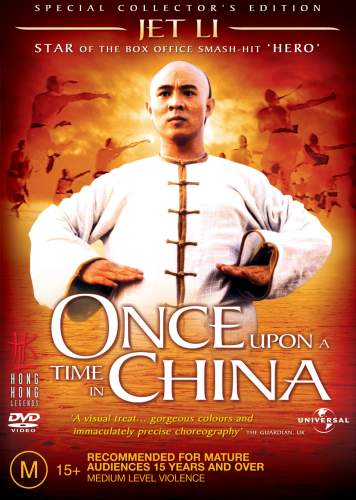 (especially if it is directed by a Chinese director and produced in China, think Hero or Fearless), even elderly Asian parents will consider it an acceptable form of entertainment in social situations. Of course the film will be watched on a disc of questionable origin that was purchased in Asia somewhere and brought back by the last relative that traveled there (who goes out to theaters?). But great care must be taken when discussing Jet Li with true martial arts enthusiasts. Being a fan of Jet Li’s more recent Chinese produced films is okay, but it is considered amateurish at the best to hold in high regard any of Jet Li’s American films such as Kiss of the Dragon or The One. True martial arts snobs will insist that only his older Chinese films such as Once Upon a Time in China or, I should say, Wong Fei Hung have any merit.
(especially if it is directed by a Chinese director and produced in China, think Hero or Fearless), even elderly Asian parents will consider it an acceptable form of entertainment in social situations. Of course the film will be watched on a disc of questionable origin that was purchased in Asia somewhere and brought back by the last relative that traveled there (who goes out to theaters?). But great care must be taken when discussing Jet Li with true martial arts enthusiasts. Being a fan of Jet Li’s more recent Chinese produced films is okay, but it is considered amateurish at the best to hold in high regard any of Jet Li’s American films such as Kiss of the Dragon or The One. True martial arts snobs will insist that only his older Chinese films such as Once Upon a Time in China or, I should say, Wong Fei Hung have any merit.